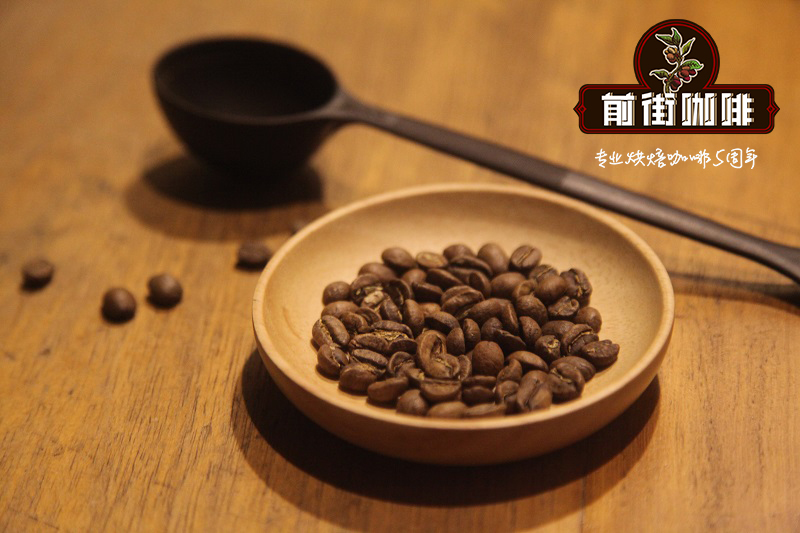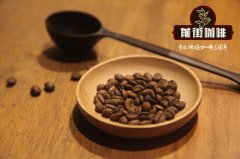Introduction of Ugandan coffee beans is the drying of Ugandan coffee sun-treated? what's the flavor addition?

Professional coffee knowledge exchange more coffee bean information please follow the coffee workshop (Wechat official account cafe_style)
Qianjie-Ugandan Coffee introduction
Uganda is located in eastern Africa, across the equator, bordering Kenya to the east, Tanzania and Rwanda to the south, Congo to the west and South Sudan to the north, with a total area of 241550 square kilometers.
Most areas belong to tropical plateau climate and savanna climate, mild and cool, with an annual average temperature of 18 ℃. The whole year is divided into two dry seasons and two rainy seasons, with a heavy rainy season from March to May and a light rainy season from October to December, with an average annual precipitation of 1000mm to 1400mm.
Ugandan coffee has a low aroma of ripe fruit, like the taste of red wine, thick mellow thickness, smelly and full-bodied fruit juice taste. It is similar to some Kenyan beans with low tone, but also has a mild earthy flavor, so it is quite different from other East African countries in flavor characteristics.
Two major coffee varieties, Robusta and Arabica, are mainly grown in Uganda.
The Robusta variety is grown at low elevations in central, eastern, western and southeastern Uganda, up to 1200 metres above sea level. Arabica varieties are grown in the highlands of the eastern Mount Elgon slope and Mt in the southwest. Rwenzori and Mt. Muhabura (altitude 1500-2300 m).
Although Uganda is a big producer of Robusta, there are still good quality Arabica beans such as typica, SL14, SL28, Kenyan coffee is world-famous for SL28 and SL34, so the Ugandan government vigorously promotes and distributes SL seeds to farmers.
Among them, SL14 not only has good flavor and drought resistance, but also can be harvested after planting for two years, which meets the needs of farmers. The common treatments of Ugandan coffee are tanning and washing.
In the washing method, the harvested coffee cherries are separated from the exocarp and most of the pulp by a pericarp machine, and the coffee beans with endocarp enter a clean tank and soak in water for fermentation to remove the remaining pulp layer.
The method of sun treatment is to remove the unqualified floating beans and then dry them in the sun, during which the fresh fruit is constantly turned to avoid fermentation or mildew, so as to achieve a very clean and rich flavor.
Knowledge: Uganda, like Congo, is also the birthplace of Rodou. As Africa's second-largest coffee exporter, Uganda's Robusta exports account for 7% of the world's output.
In short: Qianjie is a coffee research hall, happy to share the knowledge about coffee with you, we share unreservedly just to make more friends fall in love with coffee, and there will be three low-discount coffee activities every month. The reason is that Qianjie wants to make more friends drink the best coffee at the lowest price, which has been Qianjie's tenet for 6 years!
END
Important Notice :
前街咖啡 FrontStreet Coffee has moved to new addredd:
FrontStreet Coffee Address: 315,Donghua East Road,GuangZhou
Tel:020 38364473
- Prev

What are the characteristics of African Ugandan coffee? how can Ugandan coffee be tasted like this?
Professional coffee knowledge exchange more coffee bean information please follow the coffee workshop (Wechat official account cafe_style) front street-Uganda Coffee introduction if Ethiopia is the birthplace of Arabica small coffee, then Uganda is the hometown of Luodou. During the colonial era, with the encouragement of the British, Uganda began to widely plant low-altitude species in Robsta.
- Next

Is the type of Ugandan coffee Arabica? Uganda coffee grade deja vu
Professional coffee knowledge exchange more coffee bean information please follow the coffee workshop (Wechat official account cafe_style) front street-Uganda Coffee introduction SL is the abbreviation of Scott Labs (Scott Lab). Since the 1930s, Scott Lab has been commissioned by the Kenyan government to conduct research on the classification of coffee breeding in an attempt to find a way to adapt to Kenya's natural ring.
Related
- Beginners will see the "Coffee pull flower" guide!
- What is the difference between ice blog purified milk and ordinary milk coffee?
- Why is the Philippines the largest producer of crops in Liberia?
- For coffee extraction, should the fine powder be retained?
- How does extracted espresso fill pressed powder? How much strength does it take to press the powder?
- How to make jasmine cold extract coffee? Is the jasmine + latte good?
- Will this little toy really make the coffee taste better? How does Lily Drip affect coffee extraction?
- Will the action of slapping the filter cup also affect coffee extraction?
- What's the difference between powder-to-water ratio and powder-to-liquid ratio?
- What is the Ethiopian local species? What does it have to do with Heirloom native species?

